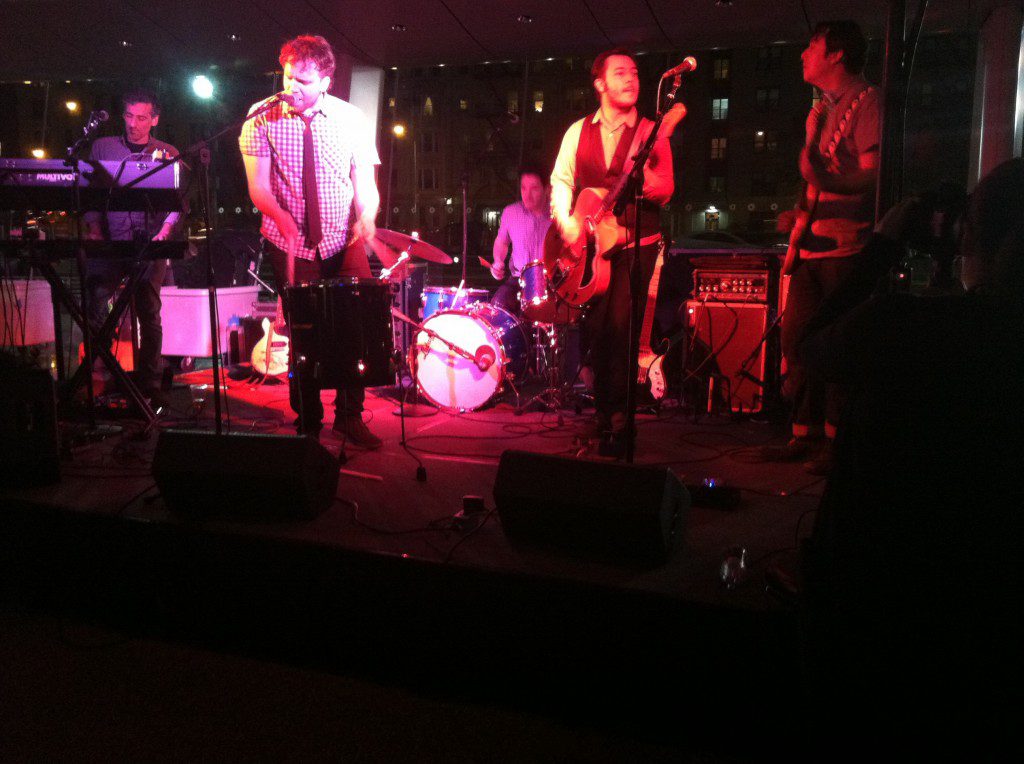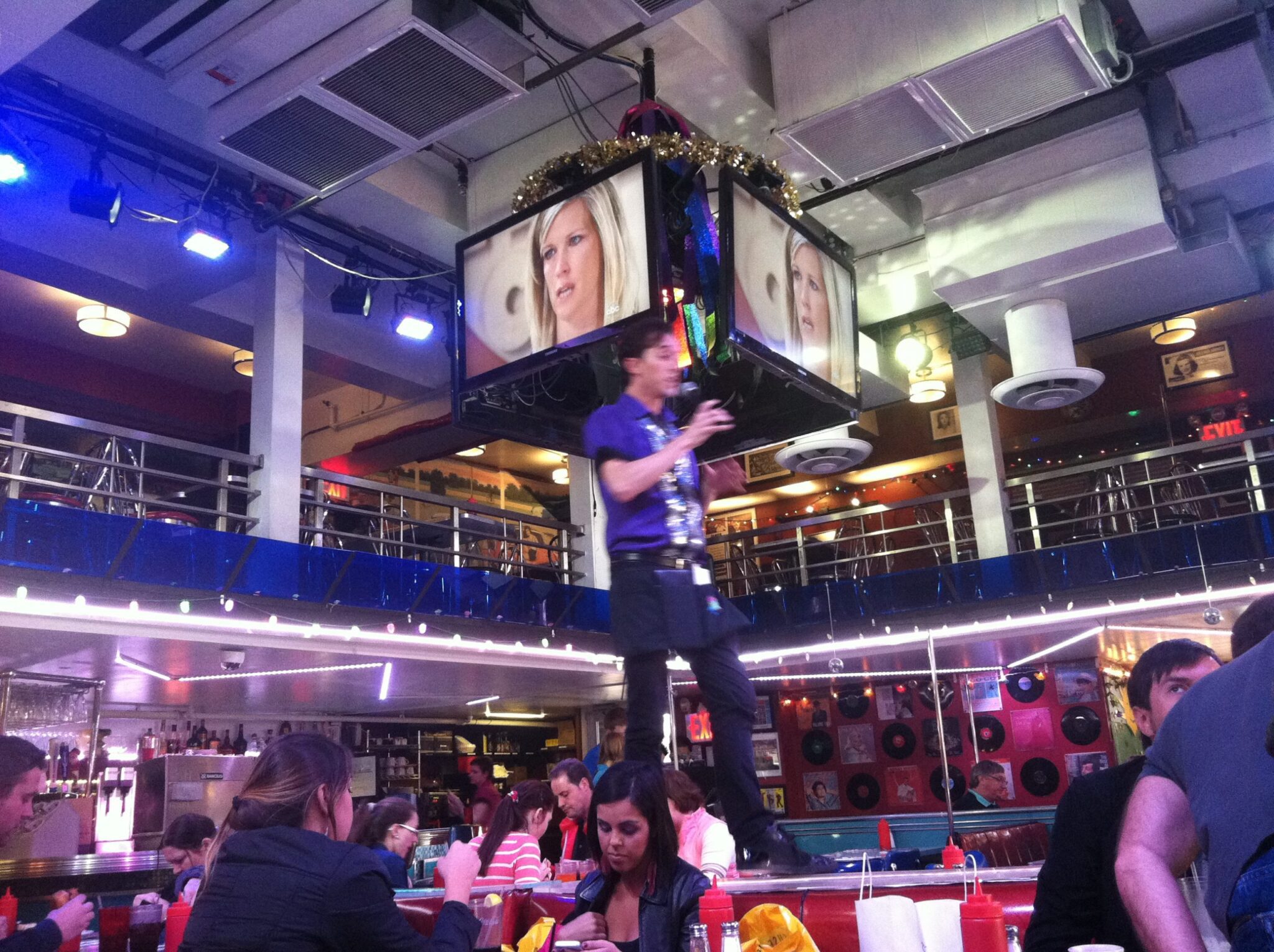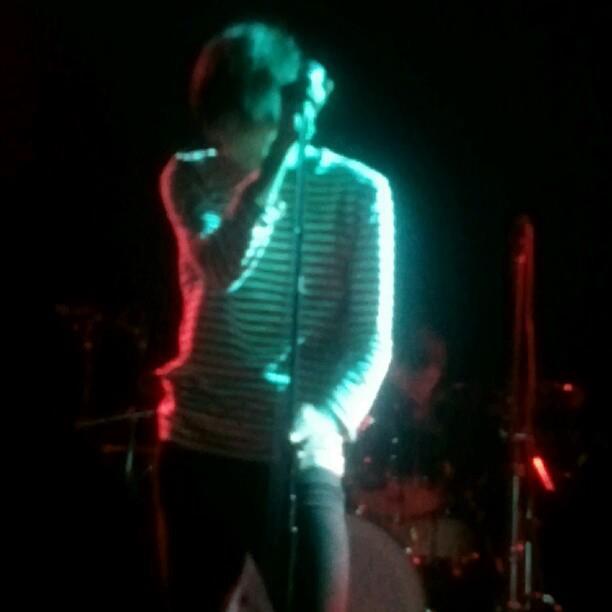
Much like the Beaux-Arts facade of the Brooklyn Museum coming to meet the modern, sheer glass enclosure of the Rubin Pavilion & Lobby, there are grand forces coming together to bring Brooklyn’s Audiophile series to the masses. The three-part series, in its second year, was created by L Magazine and showcases up-and-coming and innovative Brooklyn-based musicians – once in April, then again in May and June. This year’s festivities are curated by MTV’s Weird Vibes host Shirley Braha, formerly of New York Noise. Say what you will about MTV, but Braha’s taste is impeccable and her radar finely tuned; if all of MTV’s programming was left up to her I’d be as glued to the tube as I was leading up to 1996 (before Total Request Live mentality took over/when the Jersey Shore kids were just fist-pumping toddlers).
Though I’d missed April’s installment (Oneohtrix Point Never and Body Language) I was not about to miss New Villager and Caveman. That particular Thursday was one of those nights where there are a handful of awesome events taking place on the same evening – a presentation of the ultra-rare Rock and Roll Hotel at Spectacle Theater was a close second – but the museum is within walking distance of my house and I was hoping that New Villager would do something crazy in the space. We reviewed a live performance of the band at Mercury Lounge in January, where they’d let their performance art leanings shine despite the artistically cramped setting. I figured that the glass ceiling would be the limit when they played the Brooklyn Museum.
[fusion_builder_container hundred_percent=”yes” overflow=”visible”][fusion_builder_row][fusion_builder_column type=”1_1″ background_position=”left top” background_color=”” border_size=”” border_color=”” border_style=”solid” spacing=”yes” background_image=”” background_repeat=”no-repeat” padding=”” margin_top=”0px” margin_bottom=”0px” class=”” id=”” animation_type=”” animation_speed=”0.3″ animation_direction=”left” hide_on_mobile=”no” center_content=”no” min_height=”none”]
As it turned out, New Villager was reserving their “A” game for Bushwick Open Studios the following weekend, in which they incorporated musical performance, dance, costumes, gameplay, and mystery into a multi-location scavenger hunt. The performance at the museum was spot-on but low-key in comparison; there were some costumed performers swaying beneath the scorching spotlights, and the set was similar to the one they played back in January, though infused with some promising new tracks and certainly no less enthusiastic. Though they didn’t take full advantage of the gorgeous, multi-level sheer glass enclosure, the grandness of the lobby took advantage of the band. While I was watching New Villager, I was also watching Brooklyn – kids dancing on the steps of the plaza, splashing in the fountains, or dashing across the elevated promenade, jets swooping toward LaGuardia against an ultrablue sky, traffic inching its way around bright orange construction fencing. This element not only seems to be what the architects had in mind, but hopefully the curators and sponsors behind Audiophile embraced as well.
[/fusion_builder_column][fusion_builder_column type=”1_1″ background_position=”left top” background_color=”” border_size=”” border_color=”” border_style=”solid” spacing=”yes” background_image=”” background_repeat=”no-repeat” padding=”” margin_top=”0px” margin_bottom=”0px” class=”” id=”” animation_type=”” animation_speed=”0.3″ animation_direction=”left” hide_on_mobile=”no” center_content=”no” min_height=”none”]
By the time Caveman took the stage the sun had gone down, the night falling like a curtain behind the performers, their shimmering brand of psych pop sounding like it could have been played by the dancing reflections on the glass as opposed to the real, live band before it. Despite their rough and prehistoric sounding name, these five guys mostly wore button ups and were more clean-shaven than I’d hoped they’d be, but their set was totally rewarding otherwise. Unlike so many bands that come from elsewhere to Brooklyn to make a name for themselves, several of Caveman’s members actually grew up here, and given the setting, lead vocalist Matthew Iwanusa was really stoked on reminiscing about the days when he was meeting guitarist Jimmy Carbonetti in school. Standouts “Old Friend” “Decide” and “A Country’s King of Dreams” from 2011’s Coco Beware rolled over marble floors bounced through columns and rolled around steel beams like a one of those gargantuan prehistoric serpents. They also debuted some great new material. Iwanusa employed the use of a floor tom, front and center stage, to punctuate rollicking choruses with next-level immediacy, never replacing the rhythms of Stefan Marolachakis’ drumming behind him but accentuating certain passages, catapulting the songs into a different realm. While Caveman’s sounds are not new territory, they are skillfully pulled off with an enthusiasm and authenticity that’s hard to come by, and there’s a level of artistry that goes on behind the scenes; Carbonetti makes all the bands guitars. They’re playing several shows in Brooklyn over the next few months and are definitely worth checking out.
Additionally, The Brooklyn Museum will be hosting the next installment of Audiophile on Thursday June 21st, and it’s a doozy – Lemonade opens for Small Black. As always, the shows are free and the museum stays open late on these nights; the permanent collection is the inspiring answer to the questions that the Guerrilla Girls have posed since 1985 by including a wide array of women artists and artists of color. There’s also a stellar Keith Haring exhibition in the Morris A. and Meyer Shapiro Wing on the 5th Floor that’s must-see and closes July 8th.
[/fusion_builder_column][fusion_builder_column type=”1_1″ background_position=”left top” background_color=”” border_size=”” border_color=”” border_style=”solid” spacing=”yes” background_image=”” background_repeat=”no-repeat” padding=”” margin_top=”0px” margin_bottom=”0px” class=”” id=”” animation_type=”” animation_speed=”0.3″ animation_direction=”left” hide_on_mobile=”no” center_content=”no” min_height=”none”][jwplayer config=”AF01 YT” mediaid=”786″]
[/fusion_builder_column][/fusion_builder_row][/fusion_builder_container]









